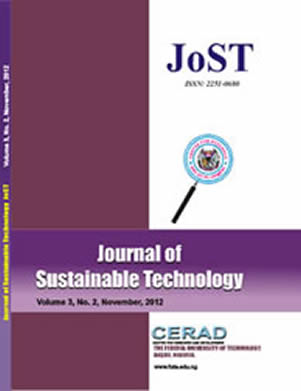Some strands of the growth accounting literature have suggested that apart from the
traditional factors’ contribution to growth, some residuals may contribute more to it. These Total
Factor Productivity (TFP) residuals may be embedded in imported technology (exogenous) or can
be home-grown (endogenous). This paper seeks to determine if the TFP variables contributed to
real growth in the Nigerian economy from 1986 to 2010. Secondary data on these macroeconomic
variables were fitted into two econometric models. In the Solow-type model, the OLS regression
performed showed that HC (human capital) and RFDI (real foreign direct investment) were
statistically significant. REMI (real expenditures on machinery imports) was also significant but
was wrongly signed. This suggests that the exogenous growth model may not be applicable to
Nigeria. In the Romer – type model, HC was allowed to interact with REMI. The OLS regression
performed showed that HC [REMI] (the interaction variable), RFDI and RRDE (real research and
development expenditures) were statistically significant. This hints at the fact that the endogenous
growth model may be applicable to Nigeria. This therefore suggests that the country has the
potential of becoming a successful technology adopter or imitator. The paper concludes by making
recommendations as to how Nigeria can attain this status and possibly transit to the status of a
technology inventor.
PAPER TITLE :DEPARTMENT OF ENTREPRENEURSHIP MANAGEMENT TECHNOLOGY, FEDERAL UNIVERSITY OF TECHNOLOGY, AKURE, NIGER
JOURNAL Of SUSTAINABLE TECHNOLOGY | VOLUME 5 NUMBER 2 2014
Paper Details
- Author(s) : ASEKUNOWO, V. O.
- Abstract:



